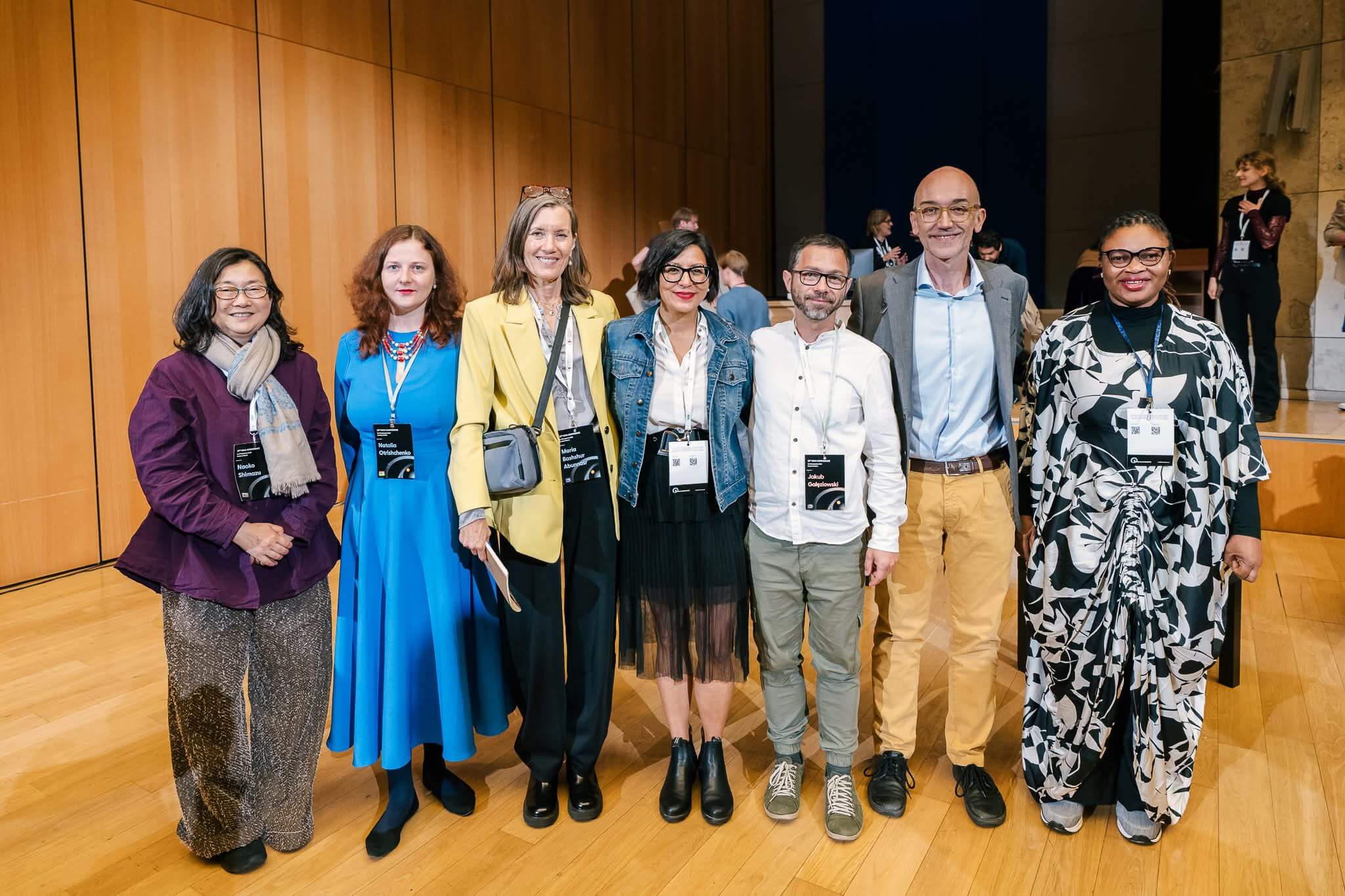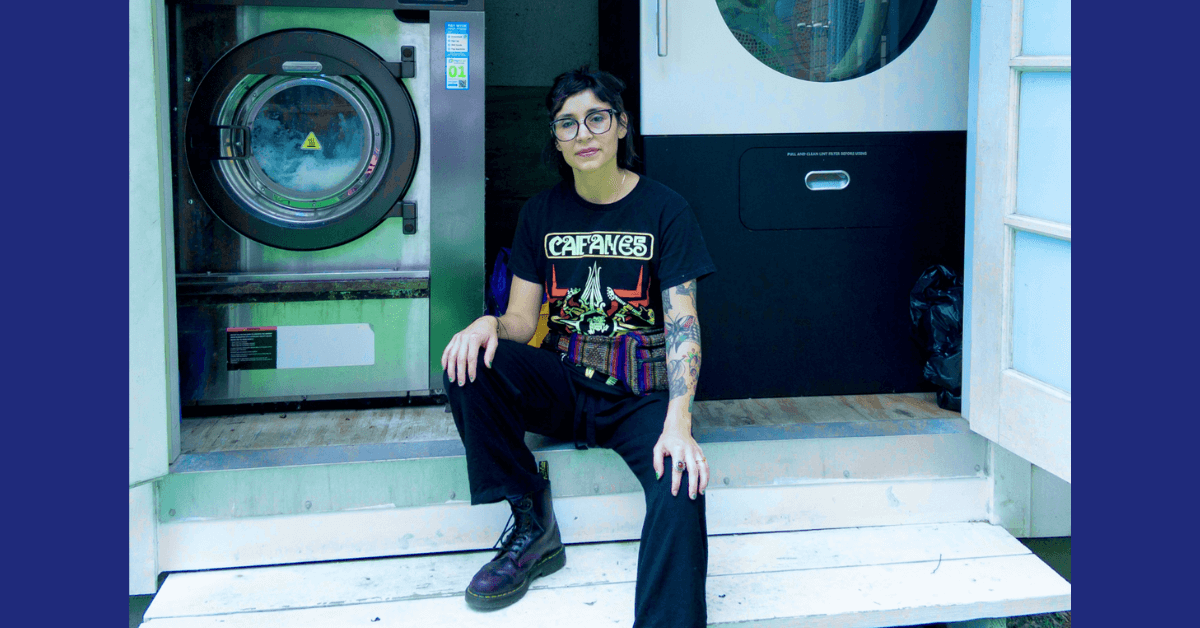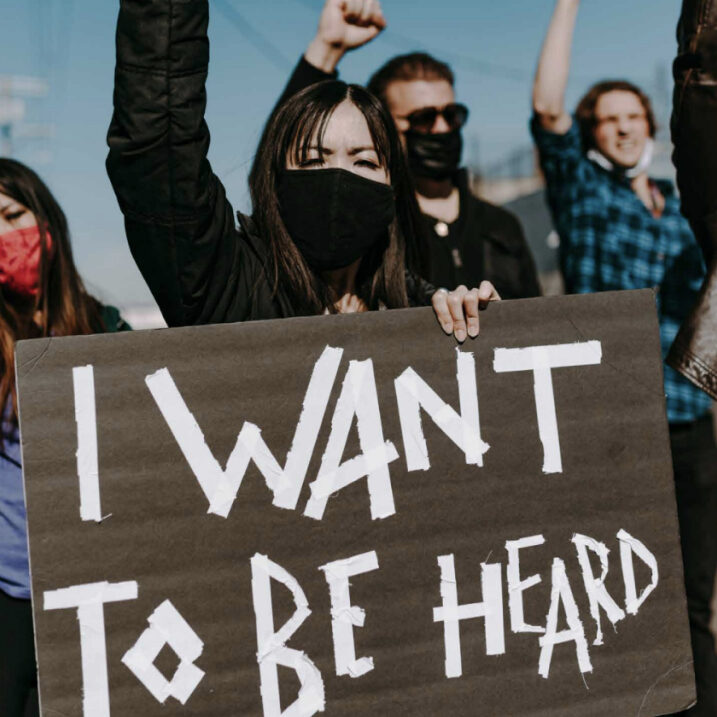by Steven Mayers
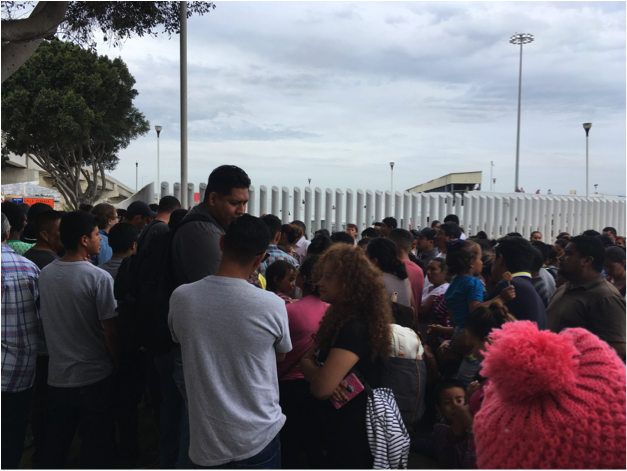
Crossing from San Ysidro into Mexico on foot, I don’t even need to show my passport. After walking down a hallway for a few minutes and across a footbridge, I am spit out into the plaza in front of El Chaparral port of entry, Tijuana. For the throngs of refugees gathered there along on the southern side of the line, the trip across this footbridge is but a fleeting dream.
At dawn every morning, hundreds of refugees arrive at El Chaparral, where a man with a notebook calls off the names of ten or twenty people from the top of the list. Until a few days ago, a Mexican refugee named Gaby carried the notebook. Now a man in a black cap carries it. A few workers from Grupo Beta, a service organization with Mexico’s National Institute of Migration that provides aid to migrants, then take those that are called to the port of entry. If one is not present when his or her name is called, then they are removed from the list. After the ten or twenty are called, the carrier of the notebook adds new names to the list, which today has reached more than four hundred and sixty.
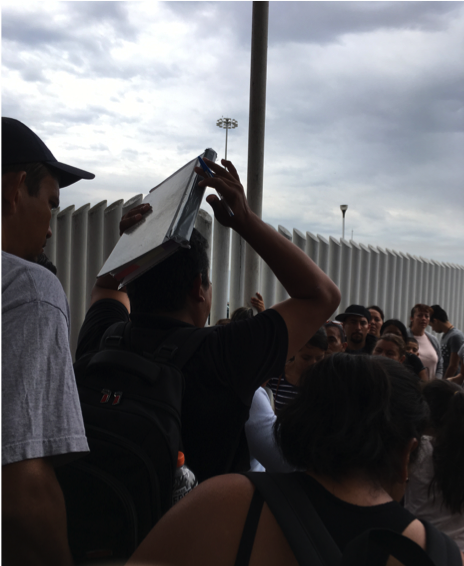
Until July 8th, over one hundred people had been camping on a long stretch of sidewalk adjacent to the plaza. On the 9th, they were ordered by the Mexican police to leave. Many stay in overflowing casa migrantes, some stay in hotels and with locals, and many sleep on the streets. They try to make it to El Chaparral every morning to be present when their numbers are called.
In the middle of the plaza, an elderly man in a wheelchair plays “Caminos de Guanajuato” on an amplified plastic slide-whistle, its doleful refrain filling the plaza throughout the morning hours, the notes bending belligerently: “Comienza siempre llorando, y así llorando se acaba. Por eso es que en este mundo la vida no vale nada.” It always starts with crying, and with crying it ends. That’s why in this world life is worth nothing.
I meet refugees from Mexico fleeing violence in Michoacán, Nayarit, and Guerrero, groups of African refugees from Cameroon, Ethiopia, and Sudan, and Central Americans from Honduras, Guatemala, and El Salvador. A Yemeni man whose friend is here to explore options of crossing tells me that after hearing of President Trump’s “Muslim Ban” a few months ago, he decided to settle in Mexico, and is marrying a Mexican woman. Information, stories, and rumors pass between the many refugees in hushed exchanges. They speak of the notebook. Many carry plastic folders containing birth certificates and other documents.
Pointing at three towering cranes just over the border, a famished Honduran man tells me that he has heard the border patrol uses the cranes to grab people who try to cross secretly, that the crossers are suspended hundreds of feet in the air with their arms and legs waving while spotlights turn on and alarms ring out. “They’re not letting anyone in,” he tells me. “It’s reached a critical point.”
A teenage boy from Guatemala is here alone to see if his number will be called. A native Mam speaker from Huehuetenango, he tells us he is traveling alone and is staying with a man in town.
A young woman from Santo Domingo, Copán, Honduras has fled violence and poverty with her son. “My name is Alejandra. My son’s name is Ivan. I’m twenty-four and I have three children. I left my two daughters with my mother and came with my seven-year-old son. My daughters are nine and eleven.” She explains that her biological mother left her with an uncle when she was one and “left with another man.” She was then adopted by a woman whose son would become the father of her children. “I had my first child when I was thirteen. It’s a long story.”
Working as a nanny in Santo Domingo, Alejandra couldn’t support her three children. “With my kids in school, and only me working, I couldn’t make ends meet.” When the father of her children was murdered, she fled for her own safety. “They killed my son’s father recently. I don’t know if they were with the maras, but they killed him.”
With no money, Alejandra and her son traveled from Honduras to the U.S. border. “I left about a month ago. We crossed Guanajuato by car and crossed Mexico on la bestia, the cargo train. I came all the way across on one train from Chiapas. From Chiapas to Tijuana, it took about twenty days. It was really tough. One has to risk their life sometimes.”
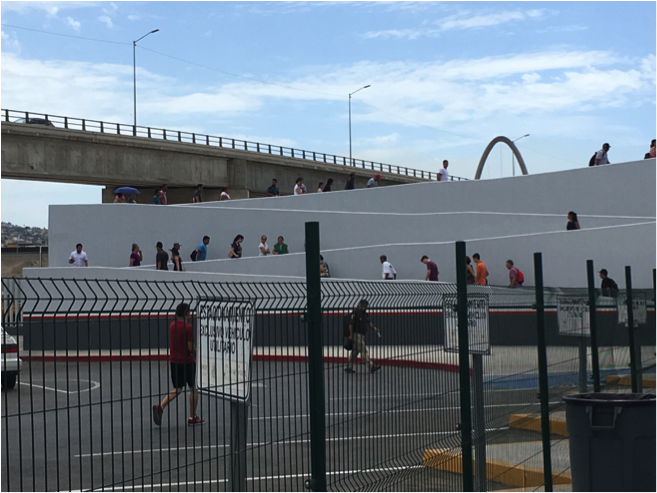
When her number is called, Alejandra is planning to apply for asylum in the United States. “I have a family member in the United States, but he can’t sponsor me. He’s really more of a friend, a friend of my son’s father. After my partner was killed, we were in contact and sometimes he would help us. He told me that he would help me. Hopefully, I can enter the United States so that my son can start school in September.” Alejandra’s chances of winning her case are uncertain, especially as Attorney General Jeff Sessions has announced that gang violence, as well as domestic violence, are no longer grounds for asylum.
Whereas in the past crossing the border without documentation was a civic misdemeanor, Sessions’ “Zero Tolerance” policy also makes it a federal crime, punishable with six months in prison. While the Trump administration thereby encourages asylum seekers like Alejandra to apply for asylum at an official port of entry, there is no coherent system in place to manage the thousands of asylum seekers that do so.
As with many refugees with children, Alejandra has heard that the Customs and Border Patrol have been forcefully separating many asylum-seeking parents from their children. “I heard that the Migra are taking people’s kids away from them in the U.S. This scares me. When I heard that they had stopped doing this, I decided to make the trip.”
After buying Alejandra and her son tacos de lengua from a stand on the street, we take them to the Madre de la Asunta shelter in a taxi. At first she is hesitant to go to a shelter not knowing how she will get from the shelter to the port of entry every morning. “I’d like to look for a casa migrantes here in Tijuana to stay at because I don’t have any money to pay for a hotel. But really I don’t know, since I have to come here every morning to see if they call my name from the list and I don’t have money for a taxi. They say I have to get there every morning at five. I heard that some shelters were bringing migrants here from the shelters in the mornings, but I don’t know if that’s true. My number is 478 and I guess they are in the three hundreds today. They say they usually call ten or twenty per day.”
Alejandra would not have made the perilous journey had it not been a matter of absolute necessity. “Many people in the United States say that we are coming for a better life. This is a lie. We are coming to save our lives, to be able to feed our children. People don’t just risk their lives for nothing.”
A young woman from Turkey with two young children has been coming every morning for two weeks, waiting for her number to be called. She tells us how President Ergodăn imprisoned her husband for ten months. After being released, he was granted a visa to the U.S., where he is applying for asylum. She flew with her two children to Brazil, and they made their way north to Mexico. She also worries that her children could be taken from her when she enters to apply for asylum. “I read on Twitter that they are taking people’s children. I’m scared.”
Neither Mexico nor the United States offers a secure path to safety for the thousands of refugees on the southern side of the Mexican border. They are stuck between nation and nation, between life and death, and between past and future, the present a liminal purgatory of hope, rumor, and relative safety. Grabbing his mom by the arm, Ivan pleads to her. “Mamá, I have to go to the bathroom.” Staring out across the packed plaza, Alejandra replies, “There is no bathroom here, mijo. You’ll have to wait.”Steven Mayers is a San Francisco-based educator and researcher who works with migrant communities as an oral historian and English professor. He is the co-editor of our upcoming book, Solito, Solita: Crossing Borders with Youth Refugees from Central America (coming Spring 2019). This piece documents his visit to the U.S. border at Tijuana on July 9, 2018.

